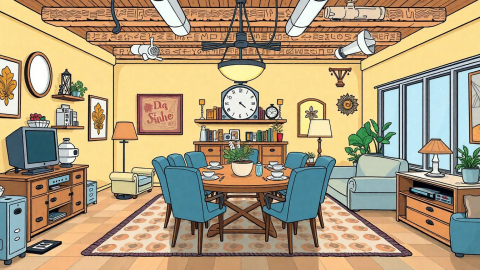The Timeless Allure of Mid-Century Modern Interior Design: A Comprehensive Guide
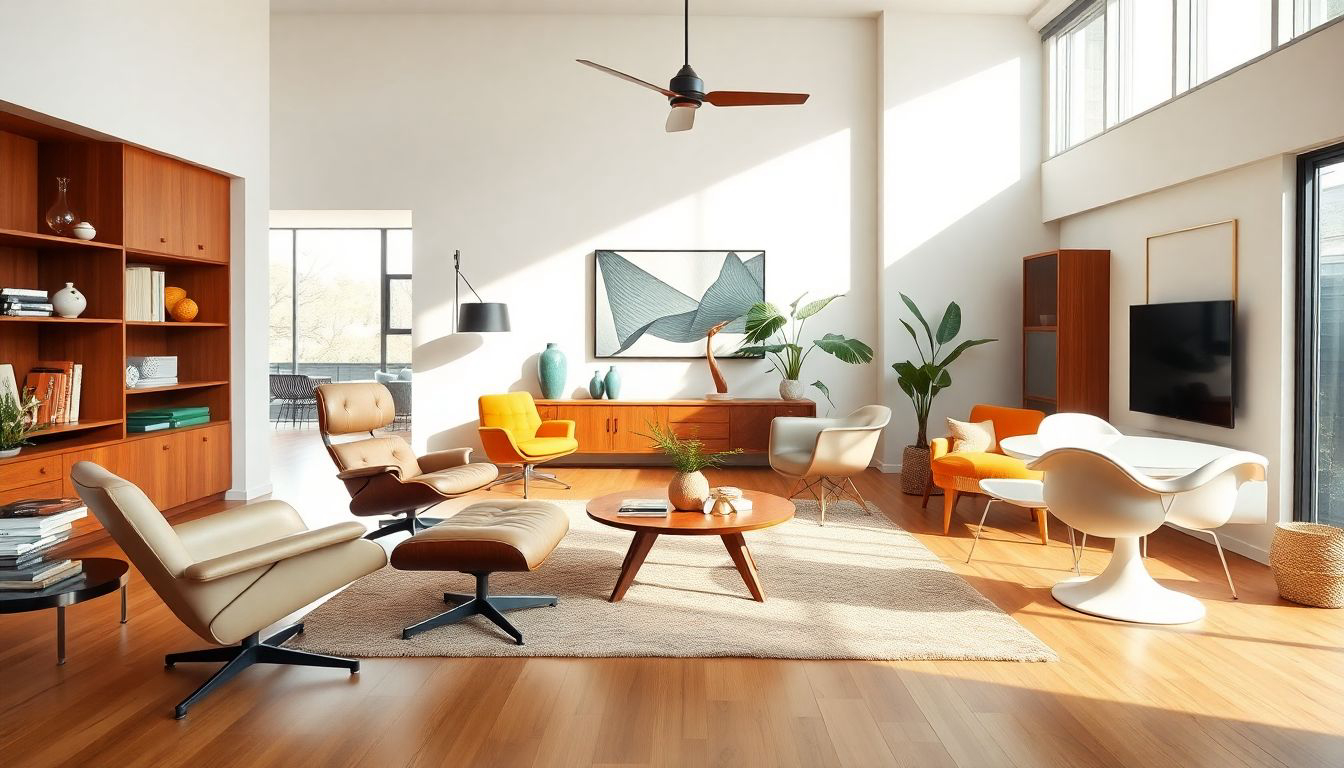
Mid-century modern interior design has captivated homeowners, designers, and enthusiasts for decades with its unique blend of form and function. Born in the post-World War II era, this design movement has transcended its original time frame to become a cherished and enduring style in contemporary homes. With its clean lines, organic shapes, and emphasis on functionality, mid-century modern design continues to resonate with those seeking a balance between comfort and sophistication. In this comprehensive guide, we'll explore the origins, key elements, and enduring appeal of mid-century modern interior design, while providing practical tips for incorporating this timeless style into your own home.
The Origins and Evolution of Mid-Century Modern Design
Mid-century modern design emerged in the late 1940s as a response to the changing needs and aspirations of post-war America. As Sarah A. Lichtman, PhD, assistant professor of design history at Parsons School of Design, explains, "You're looking at a 15 year period where Americans were undergoing tremendous hardship. In the post war, the economy starts to boom, and Americans are buying things at an unprecedented rate."
This newfound prosperity, coupled with technological advancements and a desire for a fresh start, gave rise to a design movement that emphasized simplicity, functionality, and optimism. Mid-century modern designers drew inspiration from earlier European modernism but adapted it to suit the American lifestyle, creating a style that was both accessible and aspirational.
Key Figures and Innovations
The mid-century modern movement was shaped by a cadre of talented designers and architects who pushed the boundaries of form and function. Names like Charles and Ray Eames, Eero Saarinen, and George Nelson became synonymous with innovative furniture designs that are still coveted today. These pioneers experimented with new materials and manufacturing techniques, often repurposing materials from the war effort to create groundbreaking designs.
For example, the iconic Eames Lounge Chair, designed by Charles and Ray Eames in 1956, combined molded plywood with leather upholstery to create a piece that was both comfortable and visually striking. Similarly, Eero Saarinen's Tulip Chair, introduced in 1957, used a single-piece molded fiberglass base to achieve its distinctive silhouette.
Key Elements of Mid-Century Modern Interior Design
To truly understand and appreciate mid-century modern interior design, it's essential to familiarize yourself with its defining characteristics. Let's explore the key elements that make this style so distinctive and enduring.
Clean Lines and Organic Forms
One of the hallmarks of mid-century modern design is its emphasis on clean, uncluttered lines and organic shapes. Furniture and decor often feature smooth curves and geometric forms inspired by nature and the space age. As designer Natalie Myers of Veneer Designs notes, "Midcentury design supports the way we want to live today." This focus on simplicity and functionality creates spaces that feel open, airy, and unencumbered.
Materials and Textures
Mid-century modern interiors showcase a diverse range of materials, often combining natural elements with man-made innovations. Wood, particularly teak, walnut, and rosewood, plays a prominent role in furniture and architectural details. These warm, natural tones are often juxtaposed with materials like glass, metal, and molded plastics to create visual interest and contrast.
Textiles and upholstery in mid-century modern spaces frequently feature bold, graphic patterns or rich textures. Fabrics like tweed, wool, and leather add depth and tactile appeal to furniture pieces.
Color Palette
The color palette of mid-century modern design is both vibrant and sophisticated. While neutral tones provide a calm backdrop, pops of bold color are used to add energy and personality to spaces. As designer Dani Nagel demonstrates in her Hollywood Hills living room, shades of pink can be used to create a cohesive and striking mid-century inspired space.
Typical mid-century colors include:
- Earthy neutrals: Warm browns, tans, and grays
- Bold accents: Mustard yellow, avocado green, burnt orange, and teal
- Muted pastels: Soft pinks, mint green, and pale blue
Emphasis on Functionality
At its core, mid-century modern design prioritizes function without sacrificing aesthetics. Furniture pieces are often multifunctional and designed to serve specific purposes while maintaining a sleek, uncluttered appearance. As Mark Masiello, executive director at FORM Portfolios, explains, "Midcentury modern resonates today because there's a heightened appreciation for quality. Not just quality of materials such as wood, stone, or textiles — or the quality of fabrication — but also the quality of the design itself."
Incorporating Mid-Century Modern Elements in Your Home
Now that we've explored the key elements of mid-century modern design, let's discuss how you can incorporate this timeless style into your own home.
Start with Statement Pieces
One of the easiest ways to introduce mid-century modern design into your space is by investing in a few key statement pieces. Consider iconic designs like:
- The Eames Lounge Chair and Ottoman
- The Noguchi Coffee Table
- The Saarinen Tulip Table and Chairs
These pieces can serve as focal points in a room and immediately evoke the mid-century aesthetic. However, it's important to strike a balance. As Amanda Thompson, principal and CEO of ALine Studio, advises, "You want your home to feel modern, not like a museum of the 1960s."
Embrace Open Floor Plans and Natural Light
Mid-century modern architecture emphasized the connection between indoor and outdoor spaces. To capture this essence in your home, focus on creating open, flowing spaces that maximize natural light. Consider removing unnecessary walls to create a more open floor plan, or install larger windows to bring the outdoors in.
Mix and Match Materials
Don't be afraid to combine different materials in your mid-century inspired space. Pair a sleek, chrome-legged coffee table with a warm wooden sideboard. Add texture with a shag rug or a woven wall hanging. The key is to create a balanced, harmonious look that feels curated rather than cluttered.
Incorporate Biomorphic Shapes and Patterns
Introduce organic, biomorphic shapes through furniture, lighting fixtures, or decorative objects. Look for pieces with curved, flowing lines or asymmetrical forms. In textiles and wall art, opt for abstract or geometric patterns that evoke the spirit of mid-century design.
Let Wood Take Center Stage
Wood plays a crucial role in mid-century modern interiors. Showcase beautiful wood grains in furniture pieces, flooring, or wall paneling. As designer Rozit Arditi suggests, "Make sure the woods you select work together and do not contrast each other."
Add Pops of Color
While maintaining a largely neutral base, don't shy away from incorporating bold colors into your mid-century inspired space. Use vibrant hues in accent pieces like throw pillows, artwork, or a statement chair to add visual interest and energy to the room.
The Enduring Appeal of Mid-Century Modern Design
Despite originating over half a century ago, mid-century modern design continues to captivate homeowners and designers alike. Its enduring popularity can be attributed to several factors:
- Timeless Aesthetic: The clean lines and simple forms of mid-century modern design have a timeless quality that transcends passing trends.
2. Functionality: The emphasis on practical, user-friendly design aligns well with contemporary lifestyles.
- Versatility: Mid-century modern elements can be easily incorporated into various design schemes, from minimalist to eclectic.
4. Quality and Craftsmanship: Many original mid-century pieces were built to last, using high-quality materials and expert craftsmanship.
- Nostalgia: The style evokes a sense of optimism and innovation associated with the post-war era.
As we look to the future, mid-century modern design continues to evolve and adapt to contemporary needs. Modern interpretations of classic designs and the integration of sustainable materials ensure that this beloved style will remain relevant for years to come.
Conclusion
Mid-century modern interior design offers a unique blend of form, function, and timeless appeal that continues to resonate with homeowners and designers alike. By understanding the key elements of this iconic style and incorporating them thoughtfully into your space, you can create a home that is both stylish and livable. Whether you opt for authentic vintage pieces or modern interpretations, the mid-century aesthetic provides a versatile foundation for creating spaces that are at once classic and contemporary.
As you embark on your mid-century modern design journey, remember that the true essence of this style lies in its ability to balance aesthetics with functionality. By embracing clean lines, organic forms, and a harmonious mix of materials and colors, you can create a space that not only looks beautiful but also enhances your daily life. The enduring allure of mid-century modern design is a testament to its timeless quality and adaptability, making it a style that will continue to inspire and delight for generations to come.
References and Further Reading
- A Newbie's Guide to Mid-Century Modern in Your Home
- The Resurgence of Everything Mid-century Modern
- 20 Magnificent Mid-Century Modern Interiors
- Before you start restoring, renovating or modernising your mid-century home…
- The Past, Present, and Future of Mid-Century Modern Home Design
- Real Life Design: Homes with Serious Mid-Century Style
- A Crash Course in Mid-Century Modern Design, and How You Can Get the Look
- 15 Midcentury Modern Décor and Design Ideas
- Is Mid-Century Modern Design Still in Style in 2022?
- Here's What You Should Know About Midcentury Modern Style
More Articles
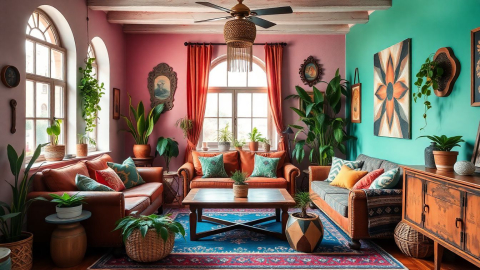
Embracing the Boho Spirit: A Comprehensive Guide to Bohemian Interior Design
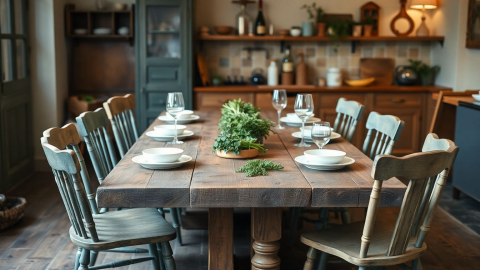
Italian Countryside Interior Design: A Satirical Guide to Rustic Chic
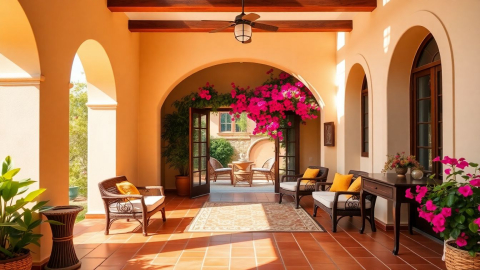
Embracing the Warmth of Mediterranean Interior Design: A Comprehensive Guide
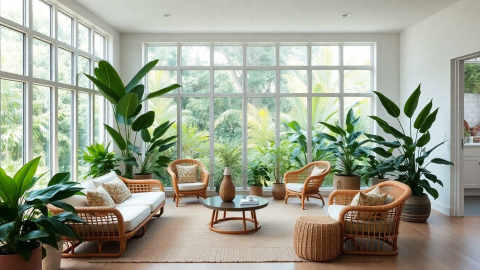
Tropical Interior Design: Creating Paradise Within Your Home
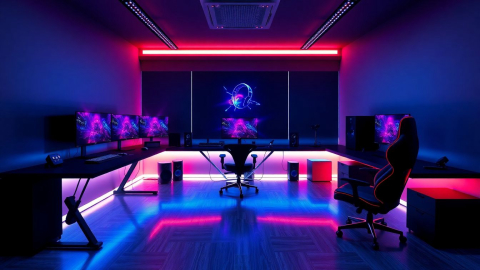
Designing the Ultimate Gaming Room: A Guide to Creating Your Perfect Digital Playground
